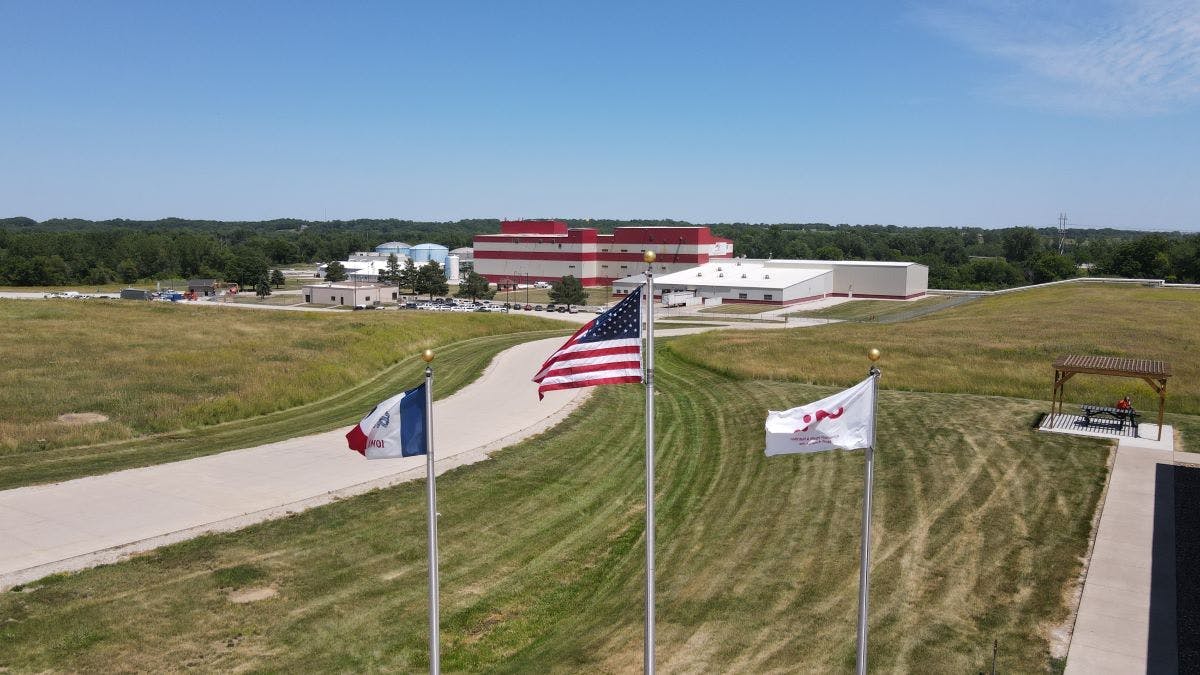During day-to-day operations in many processing plants, the first order of business is to achieve and maintain stable operations. While acceptable stability doesn’t necessarily equal maximum efficiency, it's usually difficult to achieve the latter without the former. Process optimization and fine-tuning aren't only important to increase production value, but also to keep the underlying process running as an essential baseline before undertaking more sophisticated enhancements.
Proper tuning of proportional-integral-derivative (PID) control loops is necessary first to achieve overall stability, and later for more optimized performance. Consequently, a typical process plant employs trained staff to tune loops with or without the help of software tools. Unfortunately, this activity is often intermittent and, therefore, difficult to support solely with in-house personnel, who are already tasked with a full load of other pressing responsibilities.
Ajinomoto’s process plant in Eddyville, Iowa, which produces monosodium glutamate (MSG), embodies a typical scenario (Figure 1). The facility has about 200 PID control loops, and the support team initially procured a PID loop-tuning software package followed by a plantwide control loop performance monitoring (CLPM) solution to look after these loops. Despite these investments, the team only had bandwidth for the most basic applications. The situation changed when an enhanced support offering introduced by the software vendor empowered the MSG producer to kick their process performance into high gear.
Optimization ranges from basic to advanced
Plant staff are familiar with the occasional need to use a voltmeter to verify motor or signal voltages, or a torque wrench to properly tighten bolts. In the same way, they use loop-tuning software from time to time to improve the performance of individual control loops. Though common, this approach is basic and can be counterproductive because it overlooks the much more complicated and subtle interactions often at play between loops and the varying conditions they experience.
Loop-tuning software is used to model the dynamic behavior of individual PID control loops and recommend tuning parameters suitable for a loop’s application. The goal is to optimize a loop’s responsiveness within a range of operation and under typical conditions. While many poorly performing loops are easy to spot due to equipment or process oscillations, this isn’t always the case. Most process plants only pursue their worst performing loops, and tend to do it in a reactive manner.
Unlike tuning software, CLPM solutions monitor loop behavior on a plant- or enterprise-wide basis to proactively identify issues that put process performance at risk. CLPM solutions go beyond the basics of loop tuning. They equip users with insights into mechanical issues and challenges stemming from loop interaction.
Ajinomoto saw the potential behind CLPM and deployed Control Station’s PlantESP loop performance monitoring software, which leverages data from a production facility’s existing historian. It equips users with an intuitive set of key performance indices for identifying trends, along with advanced forensic tools to isolate root causes. Like most software, all CLPM solutions require active users to realize measurable benefits.
Better tasting CLPM technology
Ajinomoto recognized the value to be gained from improving control in terms of increased quality and production output, and reduced energy and materials use. Like most processing plants, this facility generally ran well, but it persistently struggled with a few particular control-loop issues that sometimes weighed heavily on performance.
The enterprise committed to digital transformation and made great strides implementing advanced, model-predictive control (MPC), reducing manual interventions, providing comprehensive visualization and reporting, and pursuing data-quality initiatives. Applying CLPM was a logical next step in the plant’s transformation, though assigning the necessary resources remained a sticking point.
In 2023, the CLPM software supplier expanded its services portfolio by introducing Digital Lifecycle Solutions (DLS). It provides a means for the supplier’s technical experts to partner with end users, take a lead role in using the CLPM software, and facilitate achievement of plantwide process optimization. The availability of DLS, which engages process control specialists collaboratively with onsite personnel, was a favorable concept and a tipping point for Ajinomoto’s business.
Ajinomoto established a remote services contract with the CLPM supplier. To clearly define the scope, the team created a formal project charter that assigned resources, clarified performance targets and established joint accountabilities. Through this engagement, the CLPM supplier conducts weekly analyses, and submits reports detailing a nominal list of worst-performing control loops. The list includes supporting documentation and recommendations for corrective action. Monthly meetings ensure the team is aligned, and that impediments to improvement efforts are addressed systematically.
Extracting efficiency from unruly processes
Posting a first win is essential to the long-term success of any team. Early in the partnership, the team discovered a steam header pressure loop that was exhibiting oscillatory behavior. The loop was the source of variability affecting more than 10 downstream units before recirculating back upstream. Persistent oscillations negatively impacted the gas-fired units responsible for producing steam as they ramped up and down in response to pressure changes. More importantly, variations in steam pressure created inconsistently sized MSG crystals.
At first, the team attempted to eliminate the variability by tuning just the steam pressure loop, but this was only partially successful. With so much to be gained by eliminating the remaining variability, they considered other loops that might interact with the steam pressure controller to negatively influence its performance. However, the plant runs hundreds of control loops, and HMI trends made it difficult for the team to pinpoint the variability’s source.
Using the CLPM software’s forensic capabilities, they found the answer. Employing spectral analysis and cross correlation tools available in the software, the team first identified other PID loops that shared the same repetitive cycling, and then they pinpointed an on/off valve in a downstream unit that proved to be the root cause. The on/off valve was installed years earlier, instead of a modulating valve that would have been appropriate for the application.
This type of issue—where a mechanical solution negatively impacts process performance—isn't unusual. In this case, the on/off valve was a technically sound option for the basic heating tank it supplied. However, the valve’s limitations resulted in years of unacceptable surging upstream. Having isolated the valve as the root cause with the help of the CLPM software, the team recommended its replacement with a new modulating valve that allowed proper tuning of the steam header pressure loop and other loops that ultimately enhanced operational reliability (Figure 2).
As more of bad-actor loops were tuned—individually and in groups—the team found it easier to spot other less impactful but still important issues. The CLPM software provided the big picture of plantwide control loop performance. It also let users drill down and assess performance of a unit, a loop, and even at a specific metric level.
Savoring success
Controlling the performance of complex production processes is a difficult task. Although basic CLPM functionality can reveal problematic conditions, many end-users aren't fully equipped to perform deeper analyses. By employing CLPM technology and partnering with the supplier’s expert staff, it becomes easier to apply advanced analytics and implement effective, corrective actions. As an extension to a plant’s staff, third-party CLPM experts let resident engineers focus on maintaining production, while benefiting from expert and timely analysis.
After six months of teaming with the CLPM supplier, approximately half of the facility’s loops were optimized. The site documented notable improvements in overall process stability, energy use and throughput. The size of crystals produced—a proxy for quality—has been maintained at the highest levels (Figure 3). Comprehensive use of the CLPM software’s capabilities and reporting provided better visibility into loops that are trending in problematic directions, so the team can proactively address underlying issues well before they lead to costly unplanned downtime.
The partnership extended the time efficiency and overall effectiveness of internal company engineering resources, and it helped the team gain greater insights into plant performance than were previously possible. From Ajinomoto’s perspective, the CLPM software and expert DLS services arrangement more than paid for themselves. Encouraged by these successes, the company is investigating expanding these services to include additional facilities around the globe.






